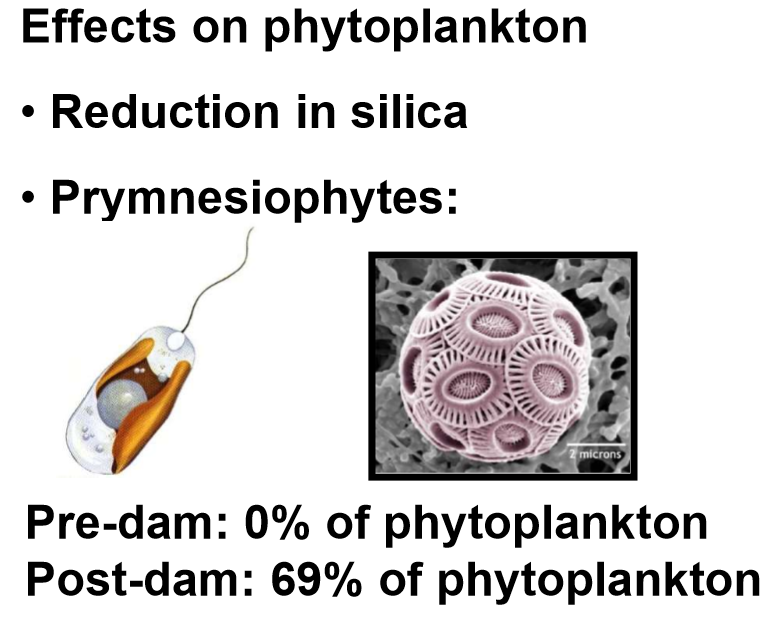Lecture 16 Ecosystems & Subsidies
1/14
There's no tags or description
Looks like no tags are added yet.
Name | Mastery | Learn | Test | Matching | Spaced |
|---|
No study sessions yet.
15 Terms
ecosystem
A system formed by the interaction of a community of organisms with their physical environment
El Nino
El Niño is observed when the easterly trade winds weaken, allowing warmer waters of the western Pacific to migrate eastward and eventually reach the South American Coast. The cool nutrient-rich sea water normally found along the coast of Peru is replaced by warmer water depleted of nutrients, resulting in a dramatic reduction in marine fish and plant life.
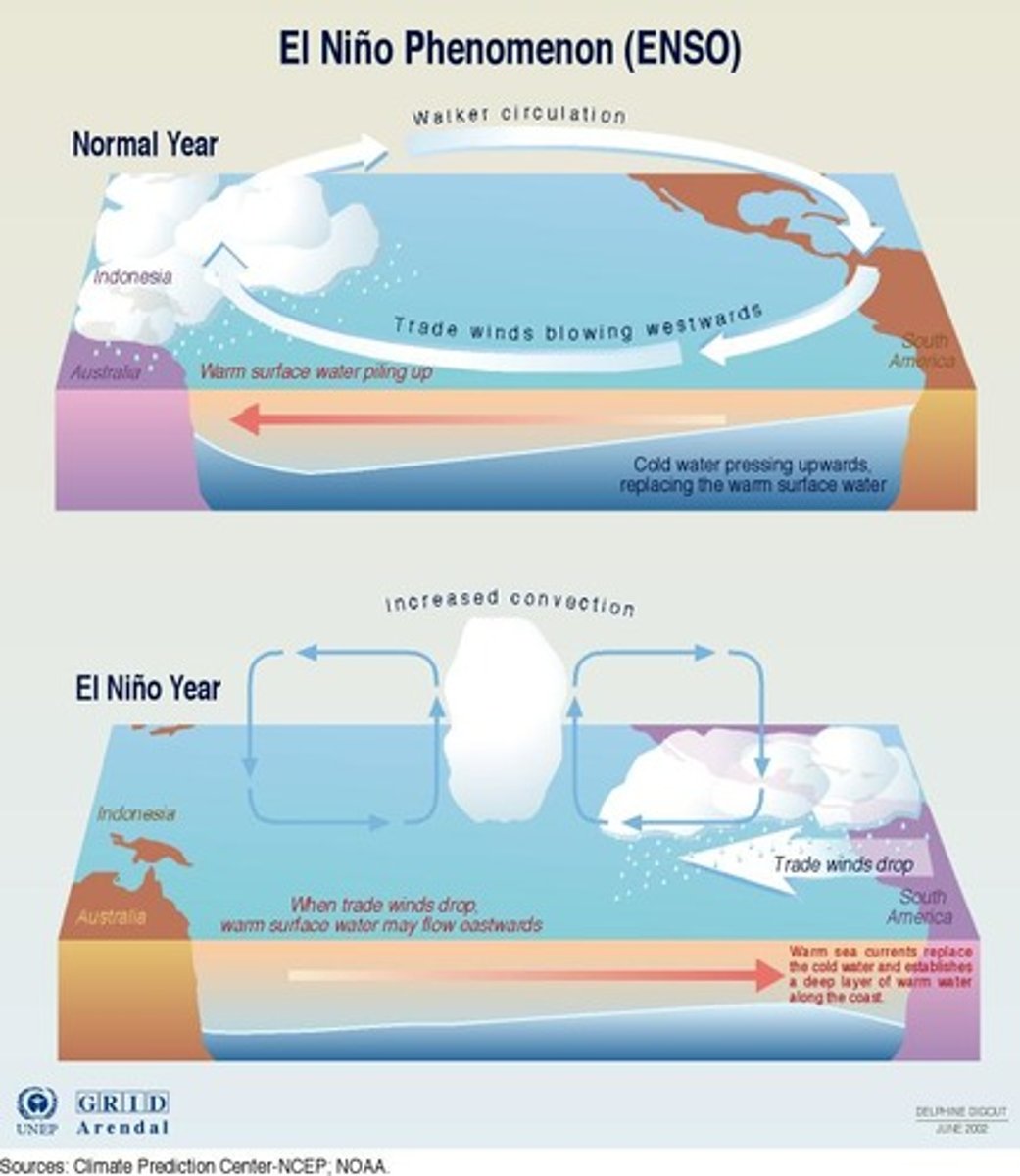
What happens during El Nino with respect to changes in the physical environment?
the warm water that usually accumulates in the western Pacific spreads eastward
sea level rises in the eastern Pacific and drops in the western Pacific
the layer of warm water extends deeper → the thermocline is pushed deeper, and the slope of the thermocline decreases
decreased upwelling
ecosystem ecology
The study of energy flow and the cycling of chemicals among the various biotic and abiotic components in an ecosystem.
spatial subsidies
Movement of energy and matter across ecosystem boundaries
ex. propagules, nutrients, food
within -system fluxes
transformation and flux of energy within the system
ex. consumption, competition, facilitation
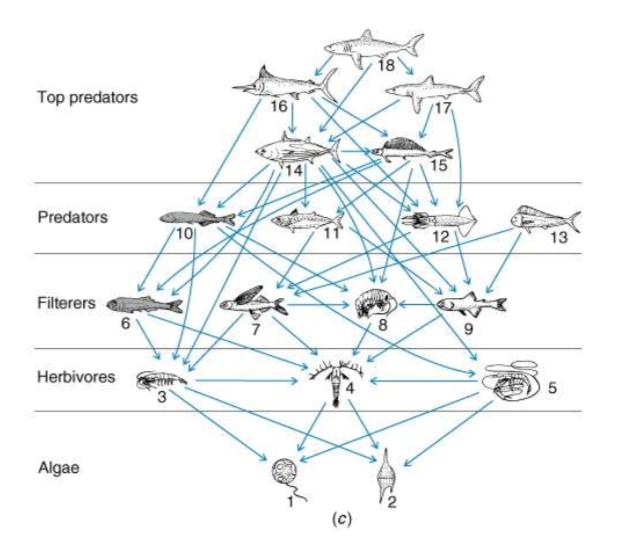
chemical transformation
transformation of chemical compounds from one form to another
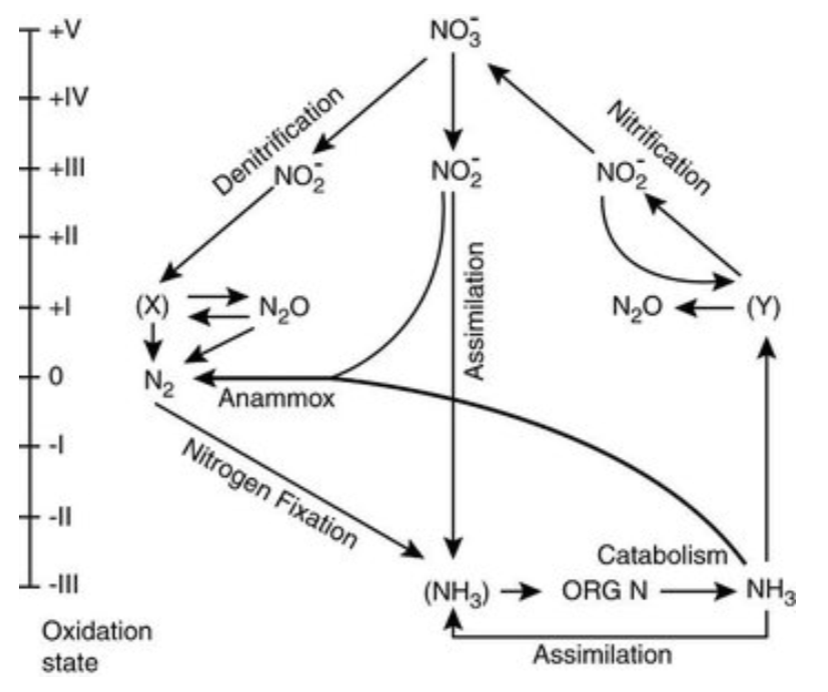
new production
Primary production based on nutrients brought into the ecosystem by processes such as upwelling
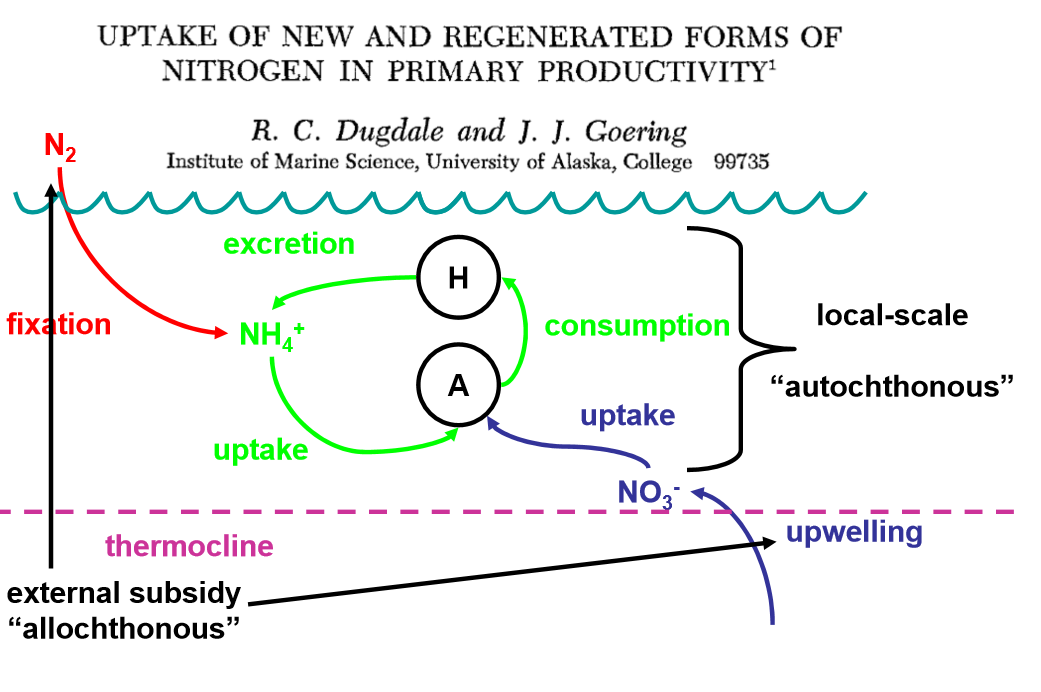
regenerated production
primary production resulting from the recycling of nutrients within an ecosystem
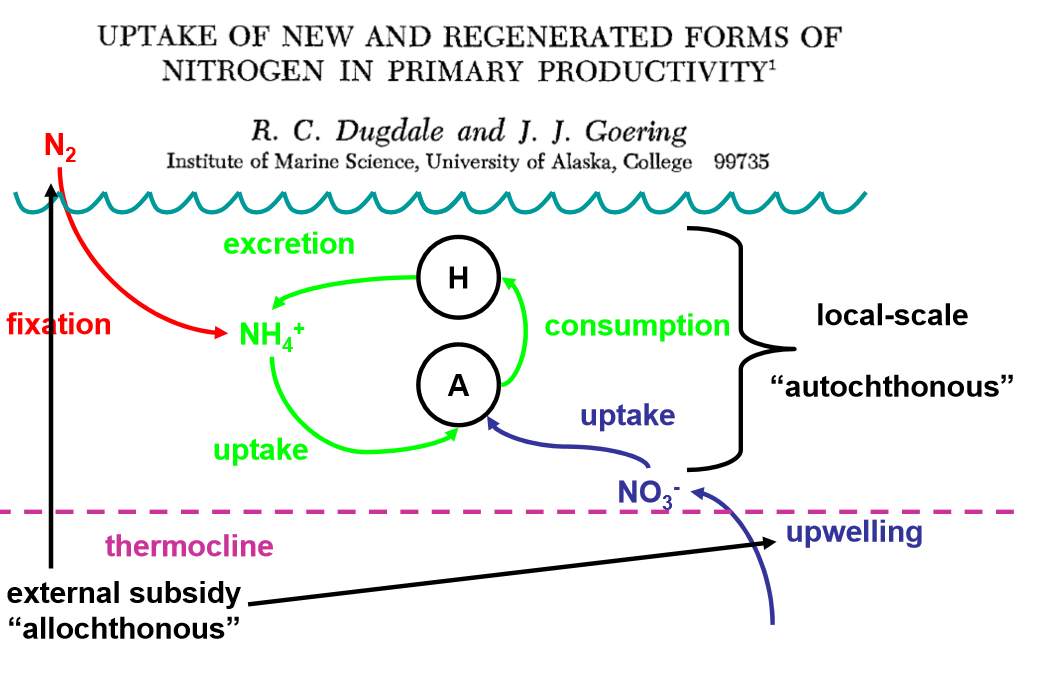
F-ratio
Ratio of new production to regenerated production

steady-state of new and regenerated production (nitrogen)
production due to external nitrogen must be balanced by production exported (particulate organic matter (POM) sinking)
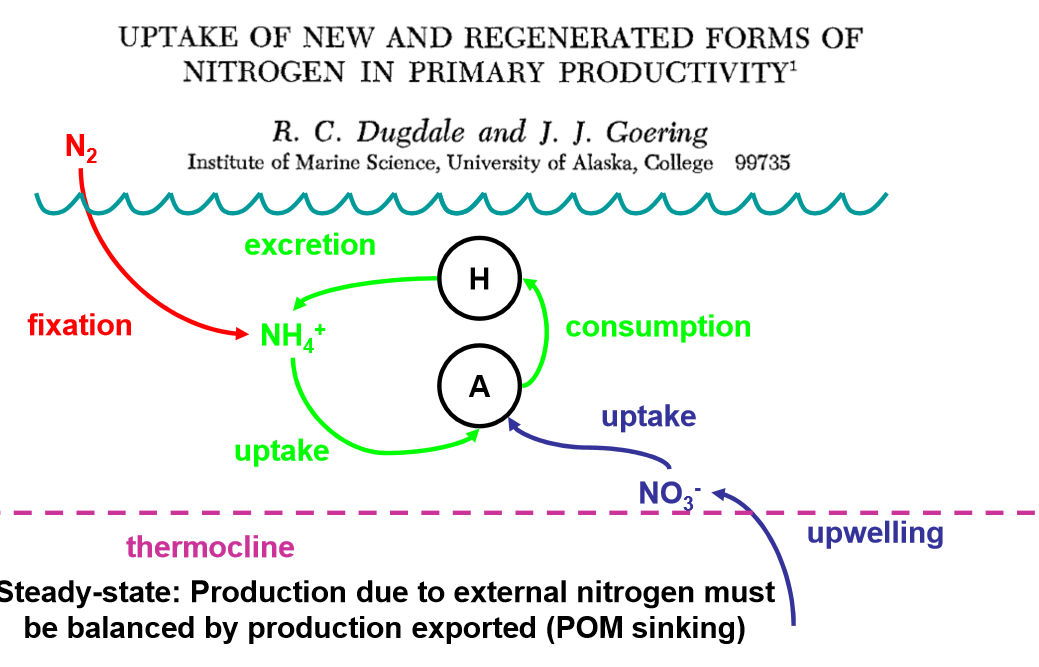
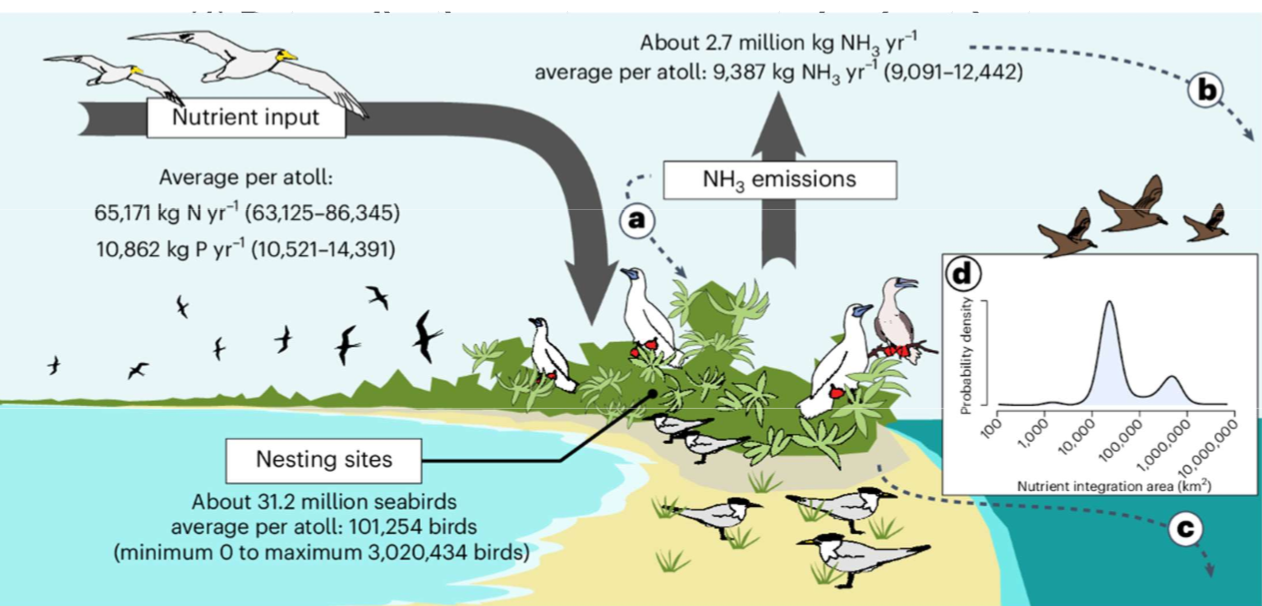
Case Study: (1) Rat eradication restores ocean-to-land nutrient subsidies
How did the authors measure subsidies?
The authors measured the stable isotope ratio of nitrogen (δ15N). A high proportion of 15N over 14N indicates seabird-derived nutrients because seabirds feed on fish that are at higher trophic levels.
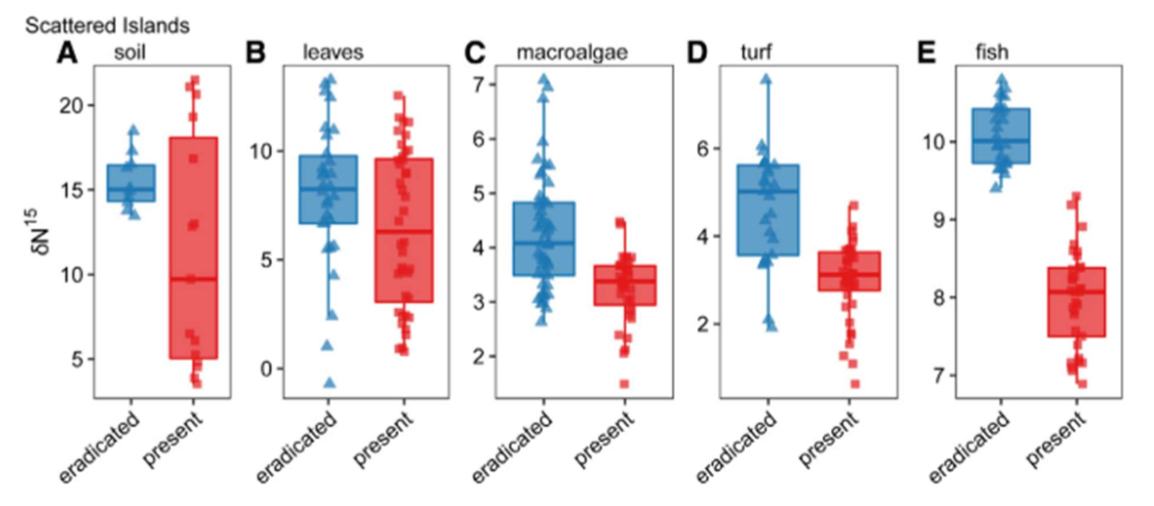

Case Study: (1) Rat eradication restores ocean-to-land nutrient subsidies
What do you see on the different island types? What happens to N enrichment as you get closer to the shore? Why?
For islands where rats were eradicated (blue), nutrient levels are highest near the shore and decrease with distance. This is expected with a stable input of seabird-derived nutrients as nutrients are highest closest to where seabird colonies are.
For islands where rats are present (red), nutrient levels do not have any significant correlation with distance. This is expected for islands where seabird-derived nutrients are mostly absent.

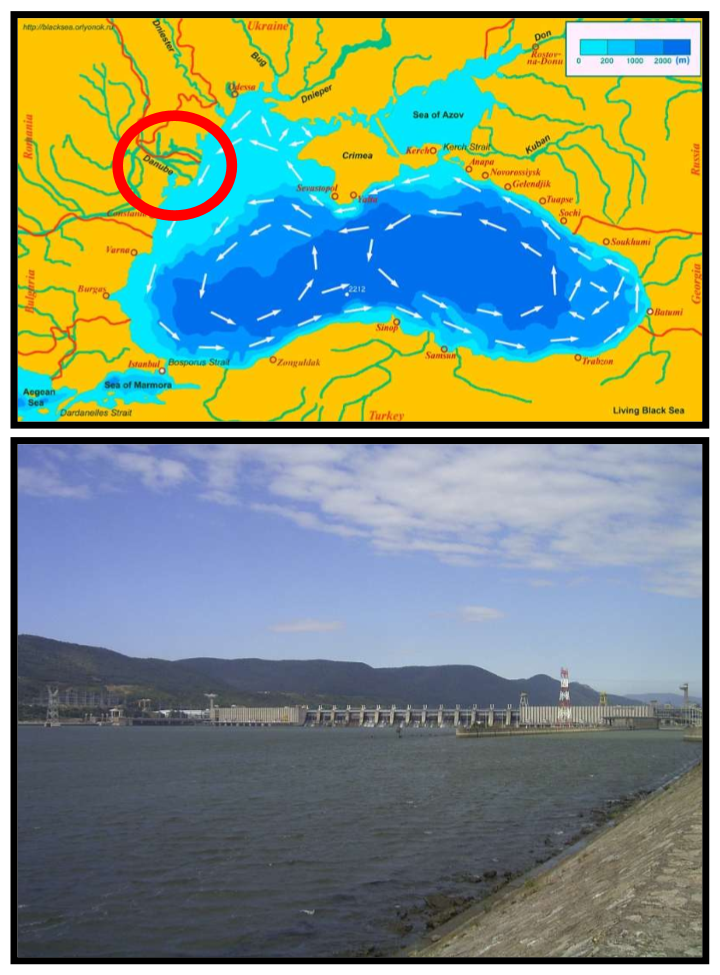
Case Study: (2) Dams, silica, and marine primary production
What effects did the Danube River dams have on subsidy inputs to the Black Sea?
greater dissolved inorganic nitrogen from agricultural runoff
huge decreases in silica inputs to the sea
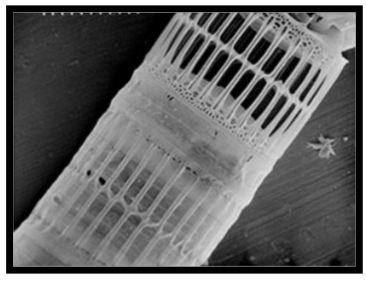
Case Study: (2) Dams, silica, and marine primary production
What consequences did the Danube River dams have on phytoplankton in the Black Sea?
Diatoms (single-celled algae) have cell walls largely composed of silica. Skeletonema (species of diatom) were the most prevalent phytoplankton pre-dam. Post-dam, Prymnesiophytes made up a large percentage of the phytoplankton. A decline in diatoms was driven by the loss of silica inputs.
